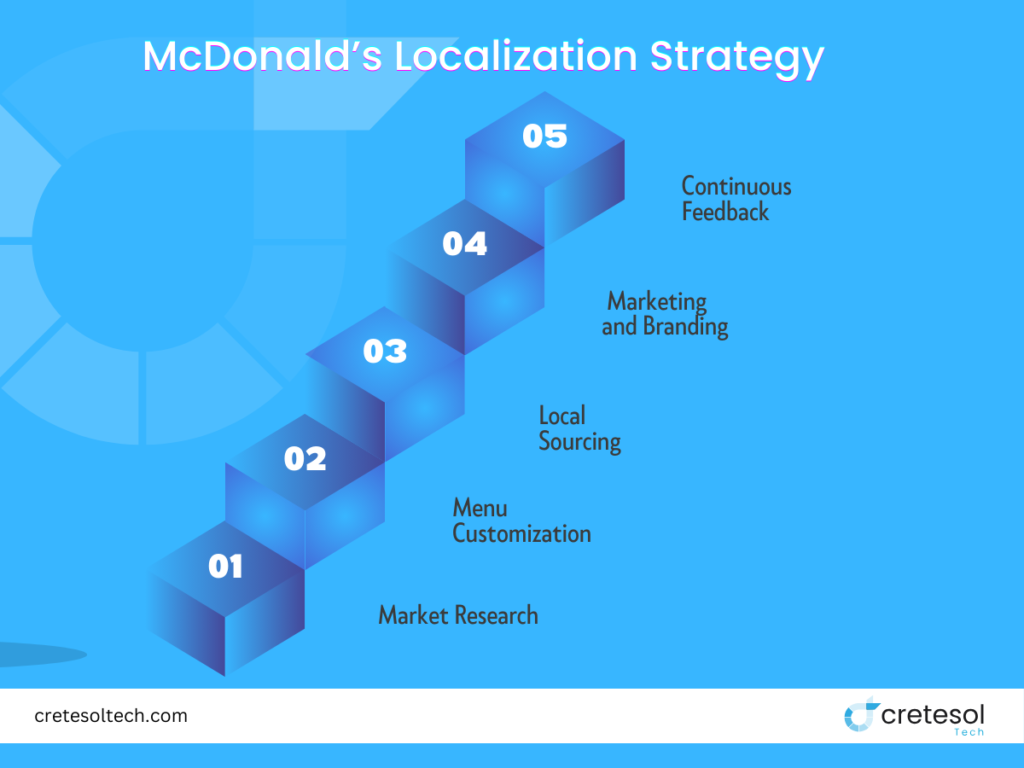Cultures differ in their beliefs, interests, expectations, and actions. These beliefs and practices influence how these cultures perceive and react to marketing communications. Marketers who seek to reach and engage clients from multiple cultures must customize their strategy and methods to the Cultural Considerations in Global Marketing contexts of their target markets.
Understanding cultural differences is essential to marketing success in today’s global marketplace. Adapting your marketing capabilities to other areas’ cultural norms might help your company connect with clients worldwide. Cultural adaptation in marketing and considerations in global marketing demand more than simply translating your material. it also requires ensuring that different cultural groups understand your message. This promotes trust and loyalty while also reducing misunderstandings. Marketing initiatives can be more effective if they cater to cultural preferences.
Understanding Cultural Adaptation
Cultural adaptation in marketing is a process that any organization that promotes its services to more than one language or culture group must go through to succeed in today’s global economy. To adjust your message to the audience’s culture, you must research, develop a strategy, and consult with them.
For example, if you promote a product in a foreign country, it is essential to understand what interests the locals and matters most to them. This involves using pictures and words that they can understand and keeping with their culture without doing things that could offend them. Such actions will help your target market recognize themselves, attracting them to your marketing efforts more.
Conducting Cultural Market Research
To adjust your marketing efficiently, you must conduct extensive market research. This includes studying cultural norms, customer behavior, and local trends in the location where you intend to promote your product or service.
Here are some simple steps to take
Conduct Surveys: Create questionnaires to gather information on people’s interests, habits, and cultural beliefs. This will help you better understand what matters most to them.
Focus Groups: Organize a small group of locals to discuss their thoughts and attitudes. This can help you better understand how they think and feel about specific topics.
Social Media: Research what individuals in your target market discuss on social media. This can help you identify trends and understand popular attitudes.
Customizing Marketing Messages
If you want to communicate effectively with your audience, you will have to adjust your marketing messages to reflect cultural differences. You will, therefore, utilize language, a list of phrases used in speech by people, and everything else that is well-known in your target groups worldwide. When particular a phrase or term is widely known within the geographical community, so it would help to include it in the message to make it look more natural or engaging.
Always consider what will be culturally sensitive and prevent any content perceived as offensive or inappropriate. If you take time to craft their messages based on cultural context, they get a more significant outreach, improving sales results for their adverts.
Adapting Visual Content and Branding
Visual elements like colors, images, and symbols can carry different meanings in different cultures. It’s essential to adjust your visuals to fit local tastes and aesthetics. For example, while white symbolizes purity in some cultures, it may represent mourning in others. Similarly, some symbols or images might be positive in one culture but offensive in another.
Use culturally appropriate images and design elements that resonate with your target audience to make your marketing more effective. By aligning your visual content with local preferences, you can create a more appealing and respectful marketing campaign that connects better with your audience.
Leveraging Local Influencers and Partnerships
Partnering with local influencers can help your campaign gain credibility and reach. Influencers have a large following and impact on a particular group. They understand the local culture, trends, and preferences, making them essential collaborators in developing original and relatable content.
Working with these influencers allows you to leverage their existing trust and relationship with the audience, making your marketing messaging more persuasive and effective. Local influencers may help you tweak your campaign to resonate more with your target audience, improving engagement and establishing a stronger relationship with your business.
Localizing Product Offerings
In today’s global marketplace, one-size-fits-all items are rarely successful. Localizing product offerings entails adapting your items to meet different markets’ unique preferences, demands, and cultural subtleties. This technique extends beyond basic translation to fully understand what local consumers value and expect from a product.
Businesses can dramatically increase their attractiveness to local customers by carefully adjusting product features, packaging, and the product itself. As there is a lot of Cultural Impact on Consumer Behavior, this increases consumer pleasure, strengthens brand loyalty, and generates sales growth across several regions. Let’s look at how to localize your product offers successfully.
Research Local Preferences: Determine what your target audience values in a product. This could include researching local purchasing habits, popular product features, and unique needs that your product can meet. Gather this information through surveys, focus groups, and market analysis.
Adjust Product Features and Packaging: Using your study, modify your product’s features and packaging to suit local tastes better. This could include changing the flavor of a food product, the look of a device, or the size and shape of the container. Make sure that your product is familiar and appealing to the local market.
Test and Gather Feedback: Before a full-scale launch, test your localized product with a small sample of local customers. Collect their input and make any required improvements. This allows you to guarantee that your product fulfills the expectations and preferences of your intended market.
Ensuring Compliance with Local Norms and Standards
Adhere to local norms and standards to successfully sell your products or services in a new region. This allows you to avoid legal concerns and develop trust with your audience. Ensure your marketing methods adhere to local advertising laws and consumer protection standards. These could include limitations on what you can and cannot say in your ads, precise labeling requirements, or promotion rules.
Adhering to these regulations demonstrates respect for the local legal system and a commitment to ethical business practices. This keeps your firm out of legal issues and helps your reputation with local customers.
Case Studies of Successful Cultural Adaptation
For Cross Cultural Communication in Global Marketing, corporations looking to connect with a wide range of consumers, cultural adaptation in marketing is an essential tactic. Businesses can build more meaningful and productive relationships with their customers by customizing products, marketing messaging, and branding to suit regional cultural contexts. The ensuing case studies of Coca-Cola and McDonald’s demonstrate how both multinational behemoths have improved their foreign marketing strategies by effectively implementing cultural adaptation.
Case Study 1: McDonald’s Localization Strategy

Step 1: Market Research
McDonald’s conducts a thorough market analysis to comprehend nutritional requirements, consumer behavior, and cultural preferences of every nation. This includes conducting focus groups, surveys, and studies of regional food trends.
Step 2: Menu Customization
The study claims that McDonald’s develops menu items to suit regional preferences. For example, McDonald’s introduced the McAloo Tikki burger, a potato-based patty with regional spices, to India, where most of the population is vegetarian and beef is typically not consumed.
Step 3: Local Sourcing
Whenever feasible, McDonald’s gets its ingredients locally. This guarantees that the cuisine satisfies regional norms and tastes while boosting the local economy.
Step 4: Marketing and Branding
McDonald’s modifies its advertising efforts to consider regional culture. This involves including pop culture references, speaking the local tongue, and casting local celebrities in commercials.
Step 5: Continuous Feedback and Improvement
McDonald’s constantly solicits consumer input to improve its marketing and food offerings. They can adapt to shifting tastes and preferences and remain relevant.
Case Study 2: Coca-Cola’s Cultural Adaptation in Japan
Step 1: Market Research
Coca-Cola conducts extensive market research to comprehend Japanese cultural norms, values, and consumer preferences. This includes studying popular culture, seasonal trends, and local media consumption.
Step 2: Tailored Advertising
Coca-Cola uses aspects of Japanese culture in its advertising. For instance, they have conducted advertising campaigns with local celebrities, traditional Japanese festivals, and themes like harmony and community that align with Japanese values.
Step 3: Product Customization
Coca-Cola has launched goods, especially for the Japanese market, such as regionally specific varieties. This includes limited-edition seasonal beverages such as flavored sakura (cherry blossom) drinks.
Step 4: Collaborations and Sponsorships
Coca-Cola collaborates with regional events and businesses. It works with nearby companies to strengthen its brand visibility and support well-known cultural events like the Olympics in Tokyo.
Step 5: Continuous Engagement
Coca-Cola actively participates in local social media networks and interacts with Japanese consumers through promotional and interactive activities. This facilitates its ability to stay in touch with its audience and continuously modify its tactics.
Conclusion
Cultural sensitivity is essential for successful international marketing. Cultural differences should be respected and understood to develop more captivating and compelling marketing efforts. To effectively communicate with a wide range of consumers and expand your company internationally, incorporate cultural sensitivity into your marketing plan.
You may improve consumer happiness and propel worldwide expansion by imitating businesses like McDonald’s and Coca-Cola, which have effectively tailored their marketing techniques to local cultures. For expert help in creating culturally sensitive and effective global marketing campaigns, contact Cretesol Tech. Our experienced team is ready to help your business succeed in diverse markets.
FAQs
What are the main challenges in cultural adaptation for global marketing?
The main challenges include understanding cultural nuances, ensuring message relevance, adapting visual content, and following local regulations. Overcoming these challenges requires thorough research and a flexible approach.
How can businesses effectively tailor their marketing messages to different cultures?
Businesses can tailor their marketing messages by doing detailed cultural research, using relevant language and symbols, and working with local influencers.
What tools can help with conducting cultural market research?
Tools like surveys, focus groups, social media listening, and cultural consulting services can provide valuable insights for cultural market research. These tools help marketers understand local consumer behavior and preferences.

 United Arab Emirates
United Arab Emirates